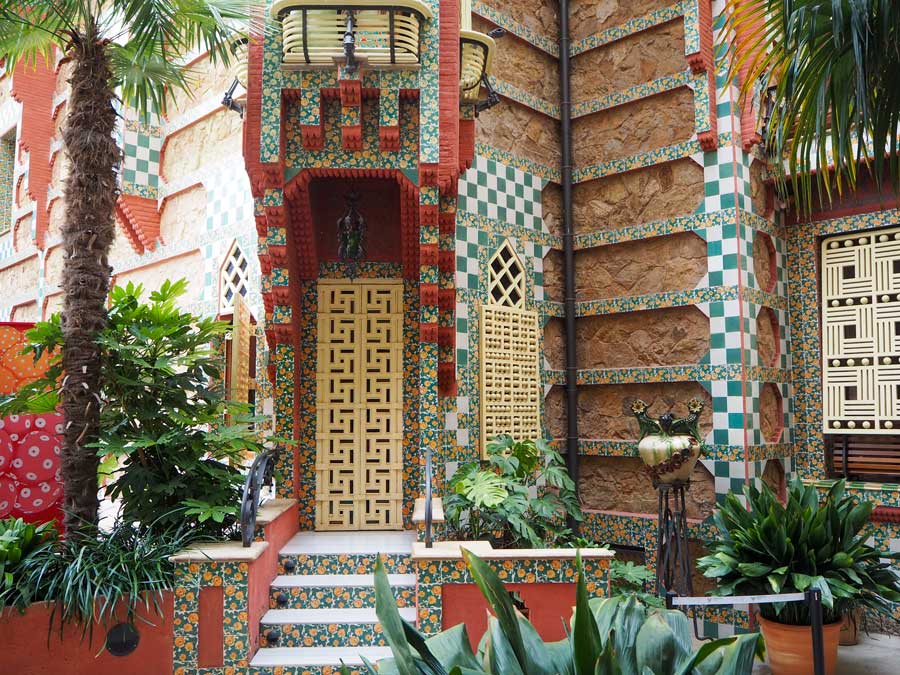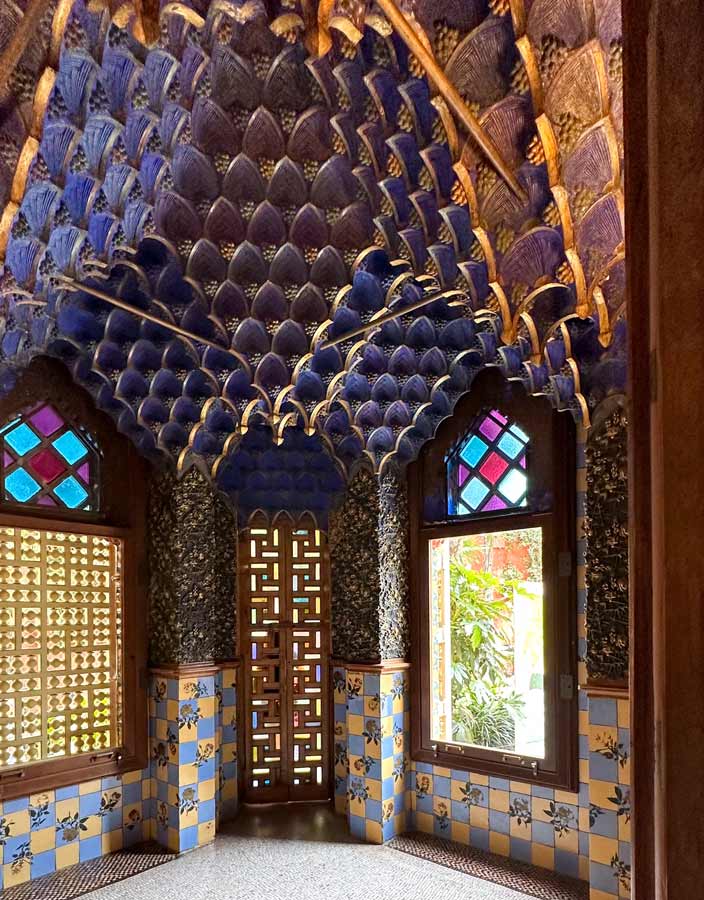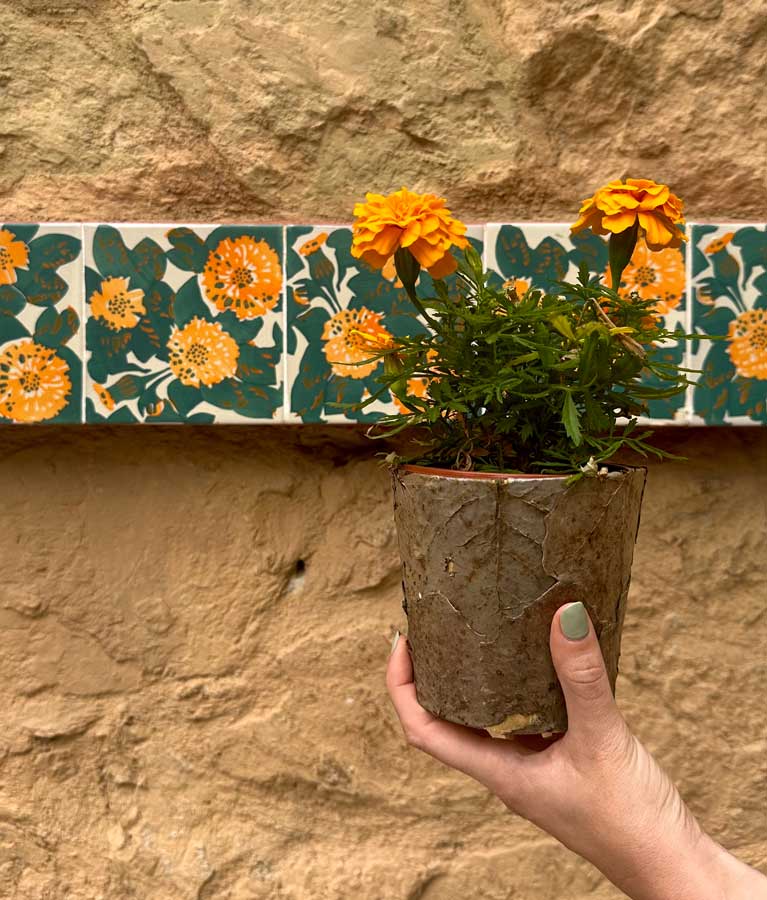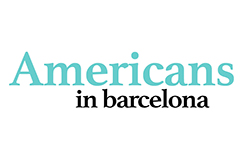Just a few days ago, we had the incredible opportunity to explore the Casa Vicens interior, an architectural gem in the city. Join us on a delightful journey as we unveil the hidden wonders of Casa Vicens in the Gràcia neighborhood…
5 Essential facts about Casa Vicens
Let’s start first with these 5 facts that you should know before visiting Casa Vicens interior:
1. Casa Vicens was built between 1883 and 1885 and it is a remarkable architectural masterpiece designed by Antoni Gaudí, showcasing his visionary style.
2. It was recognized as a UNESCO World Heritage Site in 2005 for its exceptional cultural and historical significance.
3. Casa Vicens was Gaudí’s first significant architectural commission, marking the beginning of his career.
4. It has oriental and naturalistic influences, which are reflected on the design, which can be easily perceived through the details and decorative elements.
5. Gaudí made an innovative use of materials, reflected on the vibrant tile work and colorful facade of Casa Vicens.
Let’s explore Casa Vicens interior…
After learning these 5 essential facts, let’s explore the interior of the house!
1st stop: Garden
“Architecture made nature” describes Casa Vicens perfectly, specially when you access the garden of the house. However, what we see today is just the outcome of a thorough study of the original surroundings of Casa Vicens, and the gardens by that time. The result is a recreation which includes Phoenix and Trachycarpus palms, climbing plants, magnolias and roses, among other plant species, guided by Mediterranean flora and fauna which inspired Gaudí.
2nd stop: Main floor
The main floor includes the areas for daytime activities: a central dining room encircled by an enclosed porch, a designated smoking room, and an inviting foyer. If you have seen iconic pictures of Casa Vicens interior, you probably have stumbled upon this one, the smoking room:
3rd stop: First floor
Private rooms are located on this floor: two bedrooms, a bath and a sitting room. Plant motifs can be perceived everywhere, which are full of symbolism. The main bedroom is connected to the terrace, and it was strategically designed so that the garden could be seen from bed.
4th: Second floor
It houses the permanent collection, offering visitors a comprehensive overview of everything they have seen or will see during their visit.
5th stop: Rooftop
At Casa Vicens Gaudí’s created a special rooftop: it was his first walkable rooftop, and a space for meditating and contemplating life, away from the demands of daily life.
5 Fun facts about Casa Vicens
Let’s explore this place in more detail, with less known curiosities…
1. It was a private summer residence. Casa Vicens was originally built as a summer residence for the Vicens family, who owned a ceramics factory. It served as their getaway home outside the bustling city center of Barcelona.
2. Hidden symbols. The façade of Casa Vicens is adorned with various symbols and motifs, including palm leaves, wrought-iron grilles, and ceramic tiles, each holding symbolic meanings related to nature, Catalan identity, and the Vicens family.
3. Multicultural influences: The design of Casa Vicens reflects Gaudí’s fascination with different cultures. It incorporates elements inspired by Islamic art, Moorish architecture, and even hints of Indian and Japanese influences.
4. Inspiration for Park Güell: Some architectural features and design elements of Casa Vicens, such as the use of colorful ceramics and organic shapes, later served as inspiration for Gaudí’s renowned masterpiece, Parc Güell.
A strong connection to nature
The moment we entered Casa Vicens interior, we were transported to a world where the lines between architecture and nature seamlessly merged. If you eventually visit this place, here are some details related to nature that might go unnoticed at first, but you will be glad to know before hand to understand Gaudí’s imaginary in a deeper way:
1. Ceramic tiles: The exterior and interior walls are adorned with ceramic tiles depicting natural motifs such as flowers, leaves, and branches.
2. “Clavellines” carnation flowers, are drawn on many tiles of Casa Vicens. It is probably the most iconic flower of the house, and actually it was the flower that Gaudí found on the ground and decided to reflect on the tiles design.
3. Palm Trees: The gardens of Casa Vicens are adorned with palm trees, which create a tropical ambiance and add a sense of exoticism to the surroundings. But if you pay attention to the garden doors, palm trees are also reflected on them!
4. Butterfly Attracting Plants: The gardens are planted with butterfly-attracting flowers, creating a haven for these delicate creatures. Visitors may catch glimpses of butterflies fluttering among the blooms.
5. Carved wooden elements: Furniture and architectural details in Casa Vicens interior, such as doors and moldings, showcase carved wooden elements with natural motifs like flowers, leaves, and animals. These carvings enrich the aesthetics of the house and provide an organic and artisanal touch.
If you haven’t been to Casa Vicens yet, you can’t definitely miss this architectural gem in the city. For more information on schedules or tickets you can visit Casa Vicens website.








